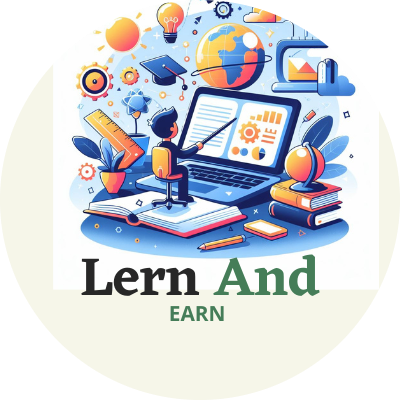Tribhuvan University – Faculty of Humanities and Social Sciences (TUFOHSS) has designed the following course for the second semester for Bachelor in Computer Application (BCA). Go through the following links to get your copies of notes. Notes are arranged in such a way that you can easily navigate to what you are searching for. Enjoy your BCA – Second Semester Notes.
1. CACS151 – C Programming
2. CAAC152 – Financial Accounting
3. CAEN15--English II
4. CAMT154 – Matgenatics II
5. CACS155 – Microprocessor and Computer System Architecture
Introduction
The Bachelor of Computer Applications (BCA) program at
Tribhuvan University (TU) is designed to equip students with foundational and
advanced knowledge in computer science and applications. The second semester is
a crucial phase where students build upon the basics learned in the first
semester and delve deeper into more complex concepts. This blog aims to provide
an overview of the second semester curriculum, notes, and model questions to
help students prepare effectively.
Curriculum Overview
The second semester of the BCA program at TU typically
includes the following core subjects:
- Discrete
Mathematics
- Data
Structures and Algorithms
- Digital
Logic
- Microprocessor
and Computer Architecture
- Object-Oriented
Programming in C++
- Sociology
Each of these subjects plays a vital role in shaping a
comprehensive understanding of computer science principles and their
applications.
Discrete Mathematics
Discrete Mathematics is essential for computer science,
covering topics such as set theory, logic, relations, functions, and
combinatorics. It lays the groundwork for algorithm analysis and design.
Data Structures and Algorithms
This subject introduces various data structures (arrays,
linked lists, stacks, queues, trees, graphs) and fundamental algorithms for
searching, sorting, and manipulating data structures. Understanding these
concepts is crucial for efficient programming and problem-solving.
Digital Logic
Digital Logic involves the study of binary systems, logic
gates, combinational and sequential circuits. It forms the basis for
understanding computer hardware and its functioning.
Microprocessor and Computer Architecture
This subject covers the architecture, programming, and
interfacing of microprocessors. It also includes the study of computer
organization and the design of CPU, memory, and input/output units.
Object-Oriented Programming in C++
Object-Oriented Programming (OOP) in C++ introduces the principles
of OOP, such as classes, objects, inheritance, polymorphism, and encapsulation.
Mastery of OOP concepts is vital for software development.
Sociology
Sociology provides a broader understanding of social
structures and issues, helping students develop a well-rounded perspective that
can be beneficial in collaborative and diverse working environments.
Study Notes
Discrete Mathematics
- Set
Theory: Definitions, operations, Venn diagrams
- Logic:
Propositions, logical connectives, truth tables, implications, equivalence
- Relations
and Functions: Types of relations, properties, functions, types of
functions
- Combinatorics:
Permutations, combinations, Pigeonhole principle
Data Structures and Algorithms
- Arrays
and Linked Lists: Types, operations, applications
- Stacks
and Queues: Implementation, operations, applications
- Trees
and Graphs: Binary trees, binary search trees, graph traversal
algorithms (DFS, BFS)
- Sorting
and Searching: Bubble sort, selection sort, insertion sort, quicksort,
mergesort, binary search
Digital Logic
- Binary
Systems: Number systems, binary arithmetic
- Logic
Gates: AND, OR, NOT, NAND, NOR, XOR, XNOR
- Combinational
Circuits: Adders, subtractors, multiplexers, demultiplexers
- Sequential
Circuits: Flip-flops, counters, shift registers
Microprocessor and Computer Architecture
- Microprocessor
Basics: Architecture, instruction set, programming
- Memory
and I/O: Types of memory, memory hierarchy, I/O interfacing
- CPU
Organization: ALU, control unit, registers, bus architecture
Object-Oriented Programming in C++
- Classes
and Objects: Definitions, constructors, destructors
- Inheritance:
Single, multiple, hierarchical inheritance
- Polymorphism:
Function overloading, operator overloading, virtual functions
- Encapsulation:
Access specifiers, encapsulation techniques
Sociology
- Introduction
to Sociology: Basic concepts, scope, importance
- Social
Institutions: Family, education, religion, economy, polity
- Social
Stratification: Class, caste, gender, race
- Social
Change: Factors, theories, social movements
Discrete Mathematics
- Define
and give examples of the following: set, subset, power set.
- Construct
truth tables for the following logical expressions: (A ∧
B) ∨ (¬A
∧
B).
- Explain
the properties of equivalence relations with examples.
Data Structures and Algorithms
- Write
an algorithm to perform binary search on a sorted array.
- Explain
the difference between a stack and a queue with real-world examples.
- Describe
the process of insertion sort with an example.
Digital Logic
- Convert
the decimal number 45 to binary, octal, and hexadecimal.
- Design
a half-adder circuit using basic logic gates and explain its working.
- Differentiate
between combinational and sequential circuits with examples.
Microprocessor and Computer Architecture
- Explain
the architecture of the 8085 microprocessor with a neat diagram.
- Write
a simple assembly language program to add two numbers and store the
result.
- Describe
the different types of memory in a computer system.
Object-Oriented Programming in C++
- Define
a class Student with appropriate data members and member functions.
- Explain
the concept of polymorphism with a suitable example in C++.
- Write
a program in C++ to demonstrate the use of constructors and destructors.
Sociology
- Discuss
the role of family as a social institution.
- Explain
the concept of social stratification and its types.
- Analyze
the impact of industrialization on social change.
Conclusion
The second semester of the BCA program at TU is designed to
build a solid foundation in both theoretical and practical aspects of computer
science. By utilizing the notes and model questions provided, students can
enhance their understanding and prepare effectively for their exams. Remember,
consistent study and practice are key to mastering these subjects. Good luck!








